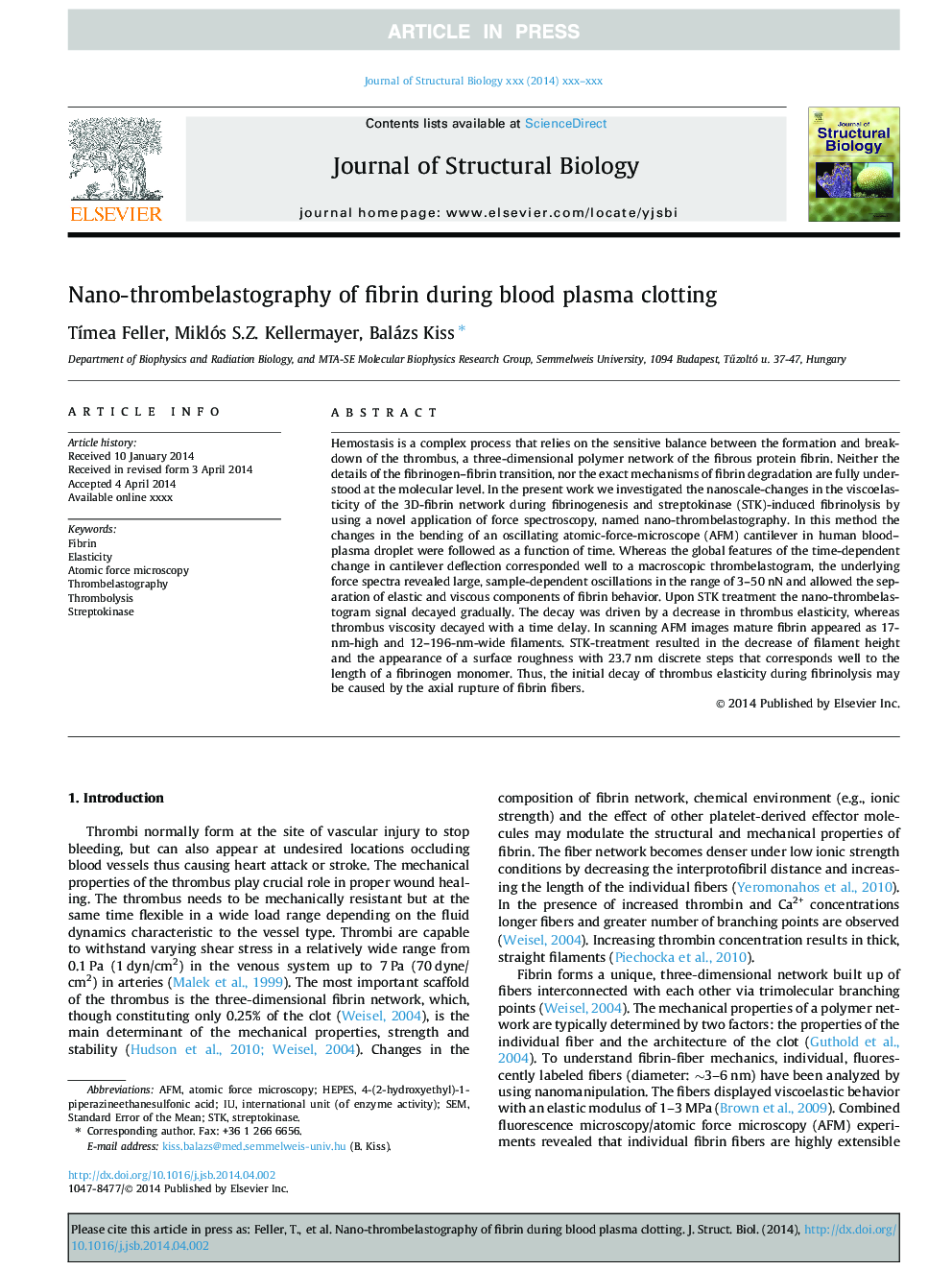| Article ID | Journal | Published Year | Pages | File Type |
|---|---|---|---|---|
| 5914072 | Journal of Structural Biology | 2014 | 10 Pages |
Abstract
Hemostasis is a complex process that relies on the sensitive balance between the formation and breakdown of the thrombus, a three-dimensional polymer network of the fibrous protein fibrin. Neither the details of the fibrinogen-fibrin transition, nor the exact mechanisms of fibrin degradation are fully understood at the molecular level. In the present work we investigated the nanoscale-changes in the viscoelasticity of the 3D-fibrin network during fibrinogenesis and streptokinase (STK)-induced fibrinolysis by using a novel application of force spectroscopy, named nano-thrombelastography. In this method the changes in the bending of an oscillating atomic-force-microscope (AFM) cantilever in human blood-plasma droplet were followed as a function of time. Whereas the global features of the time-dependent change in cantilever deflection corresponded well to a macroscopic thrombelastogram, the underlying force spectra revealed large, sample-dependent oscillations in the range of 3-50Â nN and allowed the separation of elastic and viscous components of fibrin behavior. Upon STK treatment the nano-thrombelastogram signal decayed gradually. The decay was driven by a decrease in thrombus elasticity, whereas thrombus viscosity decayed with a time delay. In scanning AFM images mature fibrin appeared as 17-nm-high and 12-196-nm-wide filaments. STK-treatment resulted in the decrease of filament height and the appearance of a surface roughness with 23.7Â nm discrete steps that corresponds well to the length of a fibrinogen monomer. Thus, the initial decay of thrombus elasticity during fibrinolysis may be caused by the axial rupture of fibrin fibers.
Related Topics
Life Sciences
Biochemistry, Genetics and Molecular Biology
Molecular Biology
Authors
TÃmea Feller, Miklós S.Z. Kellermayer, Balázs Kiss,
